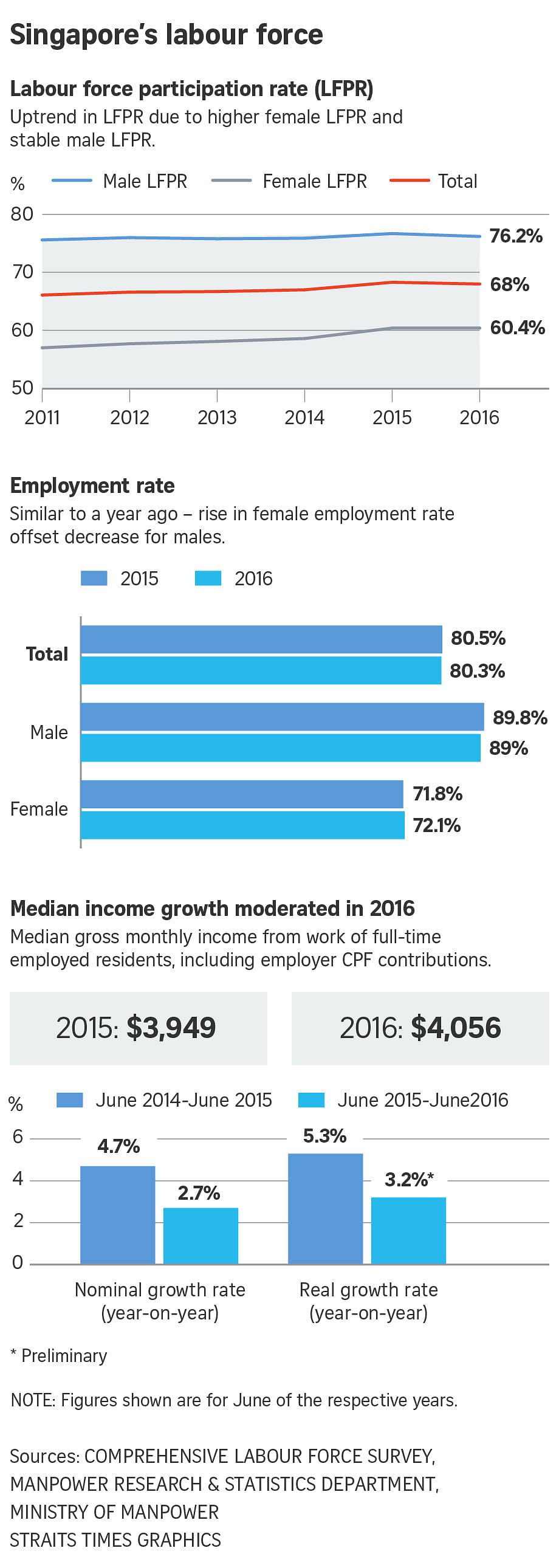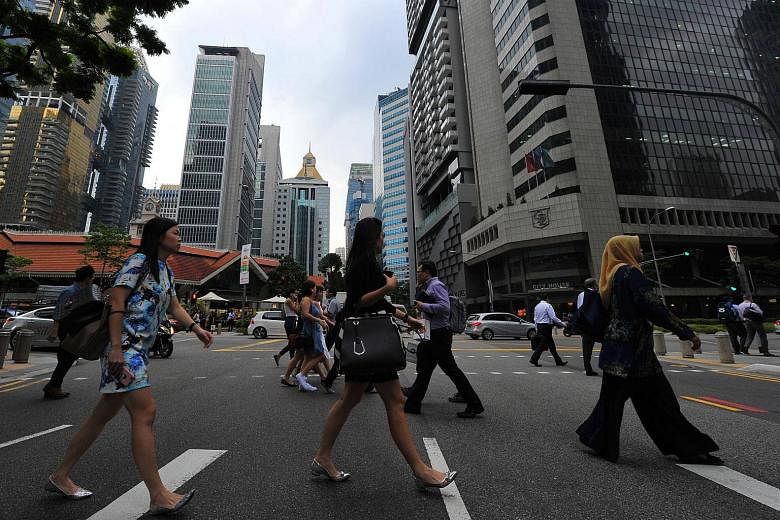SINGAPORE - Wages grew slower this year amid the weaker economic environment, the latest preliminary data from the Ministry of Manpower (MOM) showed.
Median incomes for full-time employed residents rose by 2.7 per cent over a year to $4,056 in June 2016, including employer contributions to CPF.
Real incomes grew by 3.2 per cent, lower than 5.3 per cent recorded in June 2015, after adjusting for negative inflation, the MOM estimates released on Wednesday (Nov 30) said.
Workers at the 20th percentile on the income ladder saw their pay go up but at a slower pace than the average worker over the past five years. Incomes at the 20th percentile rose by an average of 2.6 per cent per year from 2011 to 2016, while those at the median rose 3.1 per cent per year, after taking inflation into account.
Meanwhile, the labour force participation rate slipped slightly to 68 per cent this year, down from 68.3 per cent. This comes after 2015 saw a sharp increase in the proportion of residents in the labour force, which was partly the result of one-off policies, MOM said.
The employment rate for residents aged 25 to 64 also declined slightly, from 80.5 per cent last year to 80.3 per cent this year, with growth in the rate for women offsetting the fall in the rate for men.

"Nevertheless, there is no evidence of higher involuntary part-time employment," said MOM.
The incidence of people choosing to remain out of work because they do not think their job search will be fruitful remained low, and the time-related underemployment rate - the proportion of employed residents who are working part-time despite being willing and able to work longer hours - declined from last year to this year.
Fewer job openings also saw the unemployment rate for residents creeping up to 3 per cent in June this year from 2.8 per cent a year earlier, after accounting for seasonal variations.
Residents in the labour force continued to be better-educated. The proportion among them with diplomas or higher qualifications grew to 53.1 per cent this year, up from 51.5 per cent last year. For those with degrees, the proportion grew to 33.7 per cent, up from 32.2 per cent.
A total of 55.1 per cent of employed residents are professionals, managers, executives or technicians.


